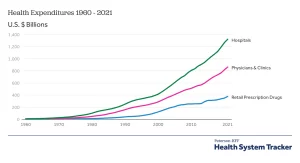In the landscape of American healthcare, rising costs have become a significant concern for individuals and families. The cost of prescription medications is a notable contributor to this issue, often posing financial challenges and barriers to accessing essential treatments. To address these concerns, pharmacies in the United States are implementing innovative strategies aimed at enhancing medication affordability and ensuring access to necessary treatments for all patients.
Understanding the Impact of Rising Healthcare Costs

The escalating prices of prescription drugs have placed an immense burden on patients, resulting in medication non-adherence, financial stress, and compromising health outcomes. Factors contributing to this rise include the increasing costs of drug development, limited competition among pharmaceutical manufacturers, and complex pricing structures within the healthcare system.
Strategies Employed by US Pharmacies

- Generic Medication Promotion: Pharmacies actively promote the use of generic medications, which are often more affordable alternatives to brand-name drugs. Generics contain the same active ingredients as their brand-name counterparts and offer substantial cost savings for patients without compromising quality or efficacy.
- Medication Price Transparency: Many pharmacies are committed to enhancing transparency in medication pricing. They provide information on drug costs, discount programs, and available financial assistance to help patients make informed decisions about their healthcare expenditures.
- Medication Therapy Management (MTM) Services: Pharmacies offer MTM services to optimize medication regimens and reduce healthcare costs. Pharmacists conduct comprehensive reviews of patients’ medications, identifying cost-effective alternatives, ensuring appropriate dosing, and addressing medication-related issues to minimize unnecessary expenses.
- Discount Programs and Loyalty Cards: Pharmacies often collaborate with drug manufacturers and insurance companies to provide discount programs and loyalty cards. These initiatives aim to reduce out-of-pocket costs for patients, offering discounts on medications and incentivizing adherence to treatment plans.
- Collaboration with Payers and Providers: Pharmacies engage in collaborative efforts with insurance companies, healthcare providers, and pharmaceutical manufacturers to negotiate drug prices and formulary placements. These collaborations aim to secure favorable pricing agreements, ensuring affordable access to medications for patients.
- Patient Education and Assistance Programs: Pharmacies conduct educational programs to empower patients with knowledge about cost-saving options, assistance programs, and resources available to alleviate financial burdens. Pharmacists assist patients in navigating insurance coverage, prescription assistance programs, and applying for financial aid when needed.
- Expansion of Telepharmacy and Home Delivery Services: To enhance convenience and reduce costs, pharmacies are expanding their telepharmacy services and home delivery options. These services provide remote access to pharmacists, facilitate medication adherence, and eliminate transportation costs for patients.
Challenges and Future Perspectives

Moving forward, pharmacies need continued support and collaboration from policymakers, healthcare stakeholders, and pharmaceutical manufacturers to implement sustainable solutions. Streamlining regulatory processes, fostering competition in the pharmaceutical market, and advocating for policy reforms aimed at controlling drug prices are vital steps in curbing healthcare expenses.
Conclusion
The rising cost of healthcare, particularly prescription medications, is a pressing issue impacting patients’ access to essential treatments in the United States. Pharmacies play a crucial role in mitigating these challenges by implementing various strategies aimed at enhancing affordability and ensuring patients’ access to vital medications. Through continued innovation, collaboration, and advocacy for systemic changes, pharmacies strive to alleviate financial burdens, making healthcare more accessible and affordable for all individuals.



